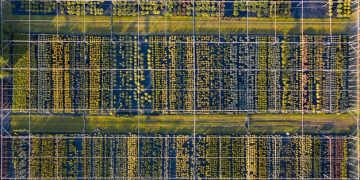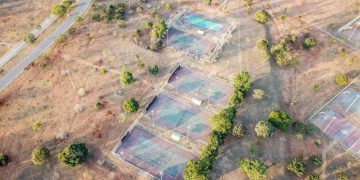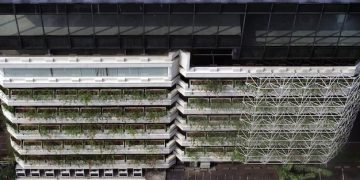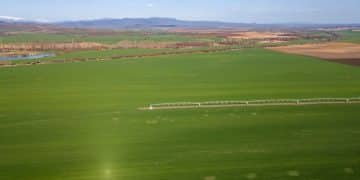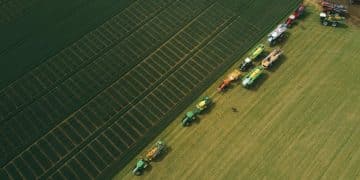Automated irrigation control systems: the future of farming

Automated irrigation control systems optimize water management, enhance crop yields, and promote sustainability while addressing challenges through technology and effective management practices.
Automated irrigation control systems are changing the game for farmers. By utilizing these smart technologies, you can optimize water usage and enhance crop yields significantly. Are you ready to explore how automation can transform your daily farming operations?
Understanding automated irrigation control systems
Understanding automated irrigation control systems is essential for modern farming. These systems significantly improve water efficiency and crop health. They integrate technology to monitor and manage irrigation processes automatically.
With these systems, farmers can achieve consistent watering, leading to healthier crops and reduced water waste. Many systems utilize weather data and soil moisture levels to adjust watering schedules. This makes automated irrigation not only efficient but also sustainable.
Key components of automated irrigation systems
These systems consist of several key components:
- Controllers: The brain of the system that manages watering schedules.
- Sensors: Devices that measure soil moisture and weather conditions.
- Valves: They control the flow of water to different areas of the field.
- Irrigation methods: Various methods like drip, sprinkler, or sub-surface irrigation.
Integrating these components enhances decision-making for farmers, allowing them to focus on other aspects of their farm. Automated systems not only save time but also ensure the crops receive the ideal amount of water.
Farmers interested in adopting such technologies should consider their specific needs. Evaluating factors like crop type, soil conditions, and budget will guide them in choosing the right system. Additionally, consulting with experts can lead to better-informed decisions.
Benefits of automated irrigation control
There are numerous advantages to implementing automated irrigation systems:
- Water conservation: Reduces waste by optimizing the amount used.
- Labor efficiency: Frees up labor resources for other farming tasks.
- Improved crop yields: Consistent watering leads to healthier plants.
- Data-driven decisions: Provides insights through data monitoring.
As farmers increasingly adopt these systems, their role in sustainable agriculture becomes clearer. This technology helps to address pressing environmental issues by ensuring water is used wisely. Understanding automated irrigation control systems is the first step in embracing this shift towards smarter farming practices.
Benefits of implementing automated irrigation in farming

Benefits of implementing automated irrigation in farming are numerous and impactful. Farmers increasingly recognize how these systems can transform their practices and enhance productivity.
One significant advantage is water conservation. Automated irrigation systems precisely manage the amount of water delivered to crops. This leads to reduced water waste, which is crucial in regions facing water scarcity. Farmers can adjust and control irrigation according to real-time weather data and soil moisture levels.
Economic advantages
Investing in automated irrigation can result in significant economic benefits. Here are some key points:
- Reduced labor costs: Automation decreases the need for manual irrigation, allowing farmers to redirect labor resources to other essential tasks.
- Increased yields: Consistently healthy crops lead to better harvests and higher revenues.
- Lower water bills: Efficient water usage can lead to reduced utility costs.
Another benefit is the data-driven approach afforded by these systems. They collect valuable information about crop health and water usage patterns. By leveraging this data, farmers can make informed decisions that improve overall efficiency and sustainability.
Sustainability and environmental impact
Automated irrigation also plays a vital role in promoting sustainability. These systems help in:
- Minimizing runoff: By applying water only when needed, they reduce soil erosion and nutrient loss.
- Maintaining soil health: Proper moisture levels prevent over-saturation and promote healthy root development.
- Supporting biodiversity: Healthier crops can develop ecosystems that support beneficial insects and other wildlife.
Moreover, farmers using automated systems often report decreased reliance on fertilizers and pesticides. This transition leads to healthier crops and reduces the overall environmental footprint of farming operations. The integration of technology in farming, particularly through automated irrigation, not only ensures better crop outcomes but also aligns with ecological conservation goals. Farmers who adopt these systems are setting a precedent for future agricultural practices.
How to choose the right automated irrigation system
How to choose the right automated irrigation system can be crucial for farmers looking to improve their water management. Making the right choice can enhance crop yields and conserve resources.
When considering an automated system, it’s important to assess your specific farming needs. Factors like crop type, soil condition, and climate all influence the best options for irrigation. Each system offers unique features that cater to different agricultural practices.
Key factors to consider
Here are some important considerations:
- Water source: Identify where your water will come from. This could be wells, rivers, or reservoirs.
- Soil type: Understanding your soil’s characteristics can guide you in selecting a system that fits best.
- Crop requirements: Different crops have varying water needs. Choose a system that meets those demands.
Combining the right technology with your specific situation is vital. For example, drip irrigation is excellent for water conservation and is ideal for crops that need targeted watering. On the other hand, sprinkler systems might suit larger fields where broad coverage is necessary.
Budget considerations
Cost is another significant factor when selecting an automated irrigation system. Prices can vary widely based on technology and features. Set a clear budget that includes not only the purchase price but also installation and maintenance costs.
After assessing your needs and budget, research the different brands available. Look for systems with positive user reviews and reliable performance. It also helps to consult with agricultural experts who can provide valuable insights based on their experiences.
Implementing the right automated irrigation system can lead to greater efficiency and productivity on the farm. As you weigh your options, keep in mind that investing in quality technology can pay off in the long run.
Challenges and solutions in automated irrigation management

Challenges and solutions in automated irrigation management present unique opportunities for farmers. Understanding these challenges helps in optimizing irrigation systems.
One common challenge is the initial cost of setting up an automated irrigation system. Many farmers hesitate due to the upfront investment required. However, this cost can often be offset by the long-term savings in water and labor costs. Finding affordable options or government grants can ease the financial burden.
Technical difficulties
Another issue can be technical difficulties with the systems. Automated irrigation systems rely on advanced technology that may sometimes fail or malfunction. Regular maintenance and proper training for operators are essential for mitigating these problems.
- Regular system checks: Schedule routine maintenance to catch issues early.
- Training programs: Offer training for staff to handle the technology efficiently.
- Support services: Partner with reliable service providers for ongoing support.
Additionally, some farmers may not fully understand how to interpret data from these systems. This may lead to questionable decisions about irrigation schedules. To address this, implementing user-friendly software and providing educational resources can significantly improve user experience.
Environmental factors
Environmental factors also pose challenges. Changes in weather patterns can affect irrigation needs. Droughts or heavy rains may disrupt planned schedules. Using weather forecasting data can help farmers make more informed decisions regarding their irrigation practices.
Moreover, soil type and condition can vary across a field. Automated systems need to adapt watering schedules based on these variations. Soil sensors and variable rate technology allow for more accurate moisture readings, ensuring that crops receive exactly what they need.
Effective irrigation management calls for a combination of technology and adaptability. Embracing these solutions allows farmers to overcome challenges and maximize their resources. By understanding the hurdles and their solutions, farmers can enhance the effectiveness of their automated irrigation systems.
FAQ – Frequently Asked Questions about Automated Irrigation Systems
What are the main benefits of automated irrigation?
Automated irrigation improves water efficiency, ensures consistent watering, and can increase crop yields significantly.
What challenges can I face when implementing automated irrigation?
Challenges include the initial setup costs, technical difficulties, and understanding how to interpret system data.
How can I choose the right automated irrigation system for my farm?
Consider factors like your water source, crop type, soil condition, and budget when selecting a system.
Are there solutions for overcoming the challenges of automated irrigation?
Yes, regular maintenance, proper training for staff, and using weather data can help address these challenges effectively.
